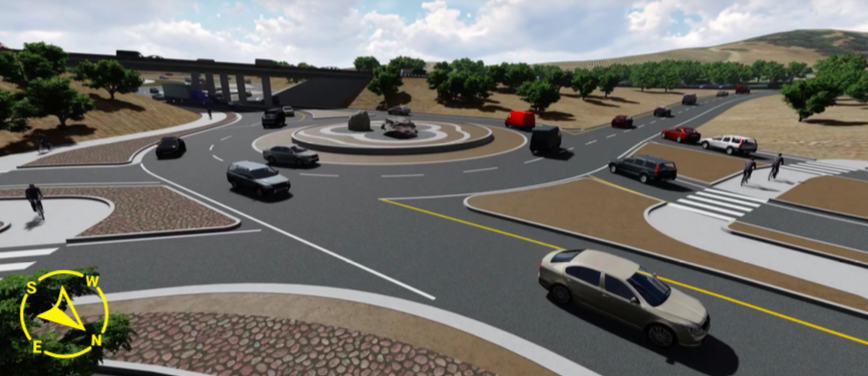California Transportation Commission (CTC) staff today released their recommendations for funding projects in three S.B. 1 (gas tax) programs for the next three years. The recommendations will be taken up by the CTC at its December 2 meeting.
All three programs are competitive, meaning that agencies apply for the funding and projects must meet specific criteria in the guidelines for each program. For example, projects in the Solutions for Congested Corridors Program must be "designed to reduce congestion in highly traveled and highly congested corridors through performance improvements that balance transportation improvements, community impacts, and provide environmental benefits."
All three programs, to one extent or another, include funding to widen highways - theoretically to speed up car traffic - despite official acknowledgement by Caltrans, the CTC, and the Air Resources Board that California needs to stop investing in infrastructure that makes solo driving more attractive.
For the Congested Corridors program, the CTC received applications for 21 projects seeking over $1.3 billion in funding, and staff recommended seven of them, for about $500 million.
The projects recommended for funding include:
- $60 million towards Bay Area Rapid Transit's Train Control Modernization program. This long-planned upgrade will allow BART to increase the number of trains it runs through the transbay tube, which is a major chokepoint holding down the ability of this heavily used system to increase capacity.
- $25 million for a double roundabout at the Soscol Junction in Napa. The project seems focused on reducing delay for drivers - that is, on improving the junction's "Level of Service" - by smoothing the flow of traffic by allowing vehicles to continue through without stopping. It also includes some bike and pedestrian accommodations, to keep them out of the way of that car traffic.
- $65 million for Bus Rapid Transit along the I-10 corridor in San Bernardino.
- $67 million for a "a package of multimodal improvements" along the I-80 corridor in Placer and Sacramento, including some light rail improvements, a new electric bus route, "complete streets" at Watt Avenue and Auburn Blvd., a new bus-only lane, and two miles of bike and pedestrian trails to close a gap in the regional trail system.
- $40 million to widen Highway 101 and make it faster, as part of the ongoing Marin-Sonoma Narrows project. These are HOV lanes. The project will also add some new striping on the parallel frontage road to add some bike lanes.
- $150 million to widen I-105 through L.A. from El Segundo to Norwalk. That is, existing HOV lanes will be changed to toll lanes, an additional toll lane will be produced with new striping, and new auxiliary lanes, etc, will be added to make it all work smoothly.
- $93 million for the Watsonville-Santa Cruz Multimodal Corridor, which includes "includes safety and operational improvements on Highway 1" and "complete street and operational improvements on Soquel Avenue/Drive and bridges over Highway 1 to provide active transportation connections between Soquel Drive and the coastal rail trail." To be specific, that means widening Highway 1 and adding some additional bike and pedestrian crossings.
Details about each project, including the ones that were not recommended for funding, can be found at links on this list [PDF].
For the Trade Corridor Enhancements program, the CTC received 47 project applications seeking over $1.7 billion, and staff recommends funding 28 of them with $1.359 billion. Most of these projects, listed here [PDF], are "highway improvements" including widenings.
The Local Partnership Program - this is the competitive portion of it - received 62 project applications seeking over $647 million, and staff recommends funding 21 of them for a total of $213 million. Those projects, listed here [PDF], are a mix of improvements for local roads, transit, complete streets, and active transportation. One example is $7 million for "Bike Up and Down in Uptown," which will bring protected bikeways, bike lanes, traffic calming, pedestrian connections, bus stop upgrades, and other cool stuff to San Diego's Uptown district.






